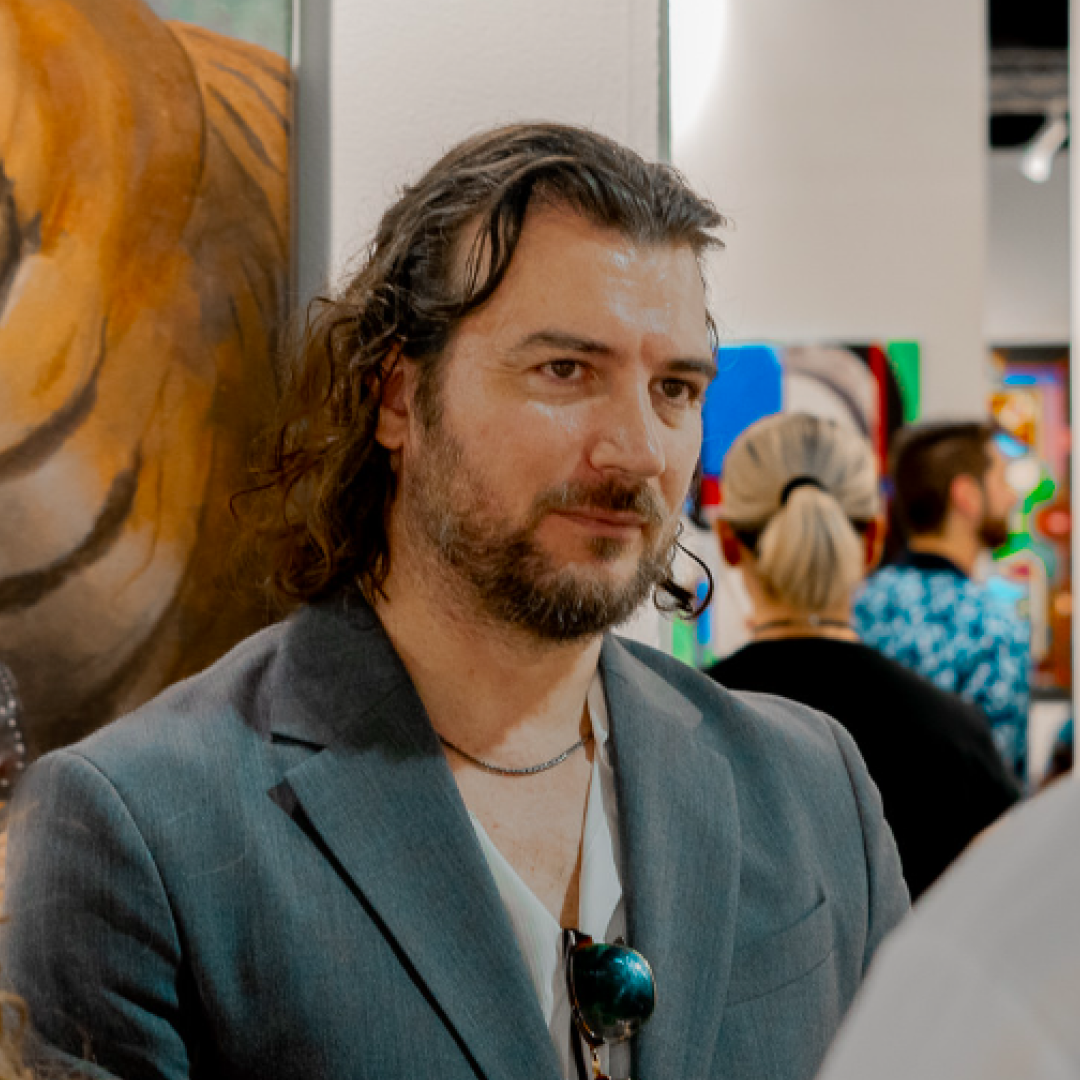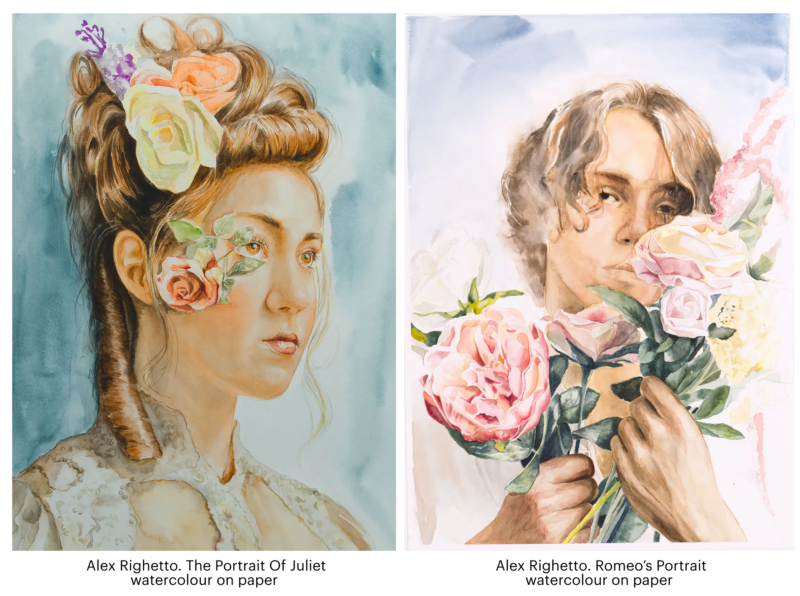Alex Righetto is an Italian artist now based in Florida. In an interview with Fine Art Shippers, he shared what led him to return to art after a twenty-year break and how beauty has the power to transform the world— or, at least, our perception of it.
Artist Talk: Alex Righetto on the Dark and Light Sides of Life
Your most recent exhibition took place at the Red Dot Art Fair as part of Miami Art Week. Can you tell us about the work you chose to feature there?
Alex Righetto: I use my art as a tool for storytelling and addressing social issues, beyond mere entertainment. At the Miami exhibition, I showcased a painting titled "The Guardian" from The Radiance Collection. This work was inspired by my experiences as a parent to a teenage daughter. My primary concern is to protect her from the dangers she might encounter on the Internet. These include not only exposure to adult content but also more sinister outcomes, such as human trafficking. In my research and discussions with friends, I discovered a whole ecosystem of predators who exploit their connections with children through video games and social media. There’s also the alarming trend of hypersexualization of women online, which distorts their perception of normalcy. So, as an artist, I felt compelled to address these issues.
However, I didn’t want to solely emphasize the dark side, but rather, I wanted to convey that women are beautiful, perfect, and possess something irreplaceable, deserving respect and appreciation beyond their physical appearance. I envisioned women as sources of a unique energy, radiating from their very being. Each painting in this collection features an explosion of colors, gold particles, and elements like flowers, symbolizing flourishing and growth.
“The Guardian” is a large-scale painting depicting a beautiful young woman in a moment of intimate self-reflection. Above her looms a giant tiger, not looking at the viewer but off into the distance. This juxtaposition of the delicate female figure and the powerful tiger creates uncertainty: is the tiger a threat or a protector? I have often interpreted the tiger as a guardian figure. However, I now see the woman herself as embodying the tiger's strength, as women need to embrace the tiger's power to survive in the world.
Bringing up sensitive topics in art is not easy, as it requires engaging the viewer in an emotional and intellectual dialogue they might not be ready to have. How was this work received by the audience?
Art fairs offer so much art to the visitors, it’s literally every inch of the space. Because of that, it’s extremely hard to catch people’s attention. That’s why I was thrilled to see how many people were drawn to my piece. They were deeply engaged, zooming in and immersing themselves in the painting. It was a joy to witness strangers stopping to appreciate my work and expressing their admiration. Such moments of acknowledgment and connection are truly gratifying.
Let’s talk about another of your series, “Romeo and Juliette.” What motivated you to bring up this subject? What does this story mean to you personally?
I'm originally from Verona, where "Romeo and Juliet" is set. When I moved to America, I thought it was a perfect way to introduce myself as an artist to a new community by connecting them with something familiar. Everyone knows "Romeo and Juliet" as a story of two lovers, but personally, I find it toxic, with all the violence that surrounds it.
So I decided to reinterpret the story. Instead of Romeo and Juliet killing themselves, in my version, they “kill” their childish egos and darkness. I see this as a metaphor for what we should do in relationships: work on ourselves, educate our flaws, and transform for the better. I think this new perspective turns the story into something inspiring and motivational.
An earlier collection of your paintings is called “Rebirth.” What were you aiming to revive or explore while working on it?
This happened in 2021. After graduating from art school in Italy, I had been swept up in a marketing career and hadn't created any art in twenty years. One day, while out walking with my family and admiring a beautiful sunset, it struck me how disconnected I had become from my art.
When we returned home, I picked up a graphite pencil and paper and began drawing a portrait of my daughter, Anastasia. As my wife and I looked at the finished piece, no words were needed between us—we both understood that it was time for me to return to my art.
This portrait became the first in a series of works that later formed the “Rebirth Collection.” The collection is not centered around a single theme but rather marks a new stage in my life as an artist, whom I've always been but hadn't expressed for many years.
This is a beautiful story. In conclusion, I would like to ask you what the essence of art is for you.
I believe the essence of art is continuity. Just as the Renaissance revisited Antiquity, every epoch draws from the heritage passed on to it. Of course, there are sometimes calls to destroy the past, as was the case with 20th-century modernism. But ultimately, even nihilism cannot exist in a void; it still stems from what was created by previous generations.
Interview by Inna Logunova Photo courtesy of Alex Righetto


